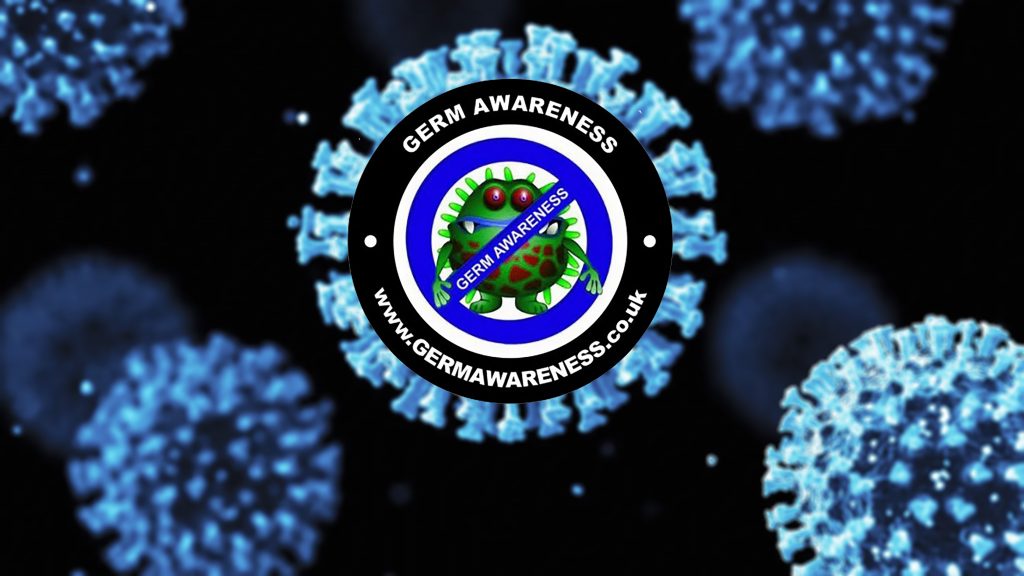Understanding Emotional Distress: Definition and Impact
Introduction:
In the UK, individuals with disabilities, including disabled entrepreneurs, are entitled to Personal Independence Payments (PIP), regardless of their financial circumstances. Unlike some other forms of financial assistance, PIP is not means-tested, meaning that eligibility is based solely on the impact of the individual’s disability on their daily living and mobility. This support is designed to provide financial assistance to help cover the extra costs associated with living with a disability, enabling individuals to lead more independent and fulfilling lives.
Emotional distress is a multifaceted concept encompassing a range of psychological symptoms and experiences. It refers to the emotional pain, suffering, and anguish an individual may endure due to various stressors, traumatic events, or mental health challenges. While it’s a common aspect of the human experience, its severity and duration can vary significantly from person to person.
Emotional distress can affect individuals regardless of whether they have a disability, or are abled, manifesting in various ways both at home and in the workplace. At home, individuals may experience emotional distress due to strained relationships, financial difficulties, or personal challenges. For instance, familial conflicts, the loss of a loved one, or struggling to balance work and family responsibilities can all contribute to emotional distress. Similarly, in the workplace, factors such as excessive workload, toxic work environments, bullying, or discrimination can lead to heightened stress and anxiety. Additionally, job insecurity, conflicts with colleagues or superiors, and feeling undervalued or unappreciated can also significantly impact an individual’s emotional well-being. Regardless of the source, addressing and managing emotional distress is crucial for maintaining overall mental health and well-being.
Defining Emotional Distress:
Emotional distress is not easily quantifiable since it’s subjective and can manifest differently for each individual. However, some common characteristics include feelings of sadness, anxiety, fear, anger, hopelessness, and despair. It may also involve physical symptoms such as headaches, fatigue, insomnia, and changes in appetite.
Examples Of Emotional Distress
Examples of emotional distress stemming from prolonged stress, anxiety, and depression due to various life challenges such as financial difficulties, the rising cost of living, and ongoing disputes can manifest in numerous ways:
- Constant Worry and Anxiety: A person may find themselves constantly worrying about how to make ends meet, pay bills, or handle mounting debts. This persistent anxiety can lead to sleep disturbances, panic attacks, and an inability to concentrate or focus on tasks.
- Feelings of Helplessness and Despair: As financial pressures mount and disputes remain unresolved, individuals may feel a sense of hopelessness about their situation. They may struggle to see a way out of their difficulties, leading to feelings of despair and low self-worth.
- Social Withdrawal: The stress of dealing with ongoing problems can cause individuals to withdraw from social interactions. They may isolate themselves from friends and family, feeling unable to cope with the demands of maintaining relationships while dealing with their struggles.
- Impact on Physical Health: Prolonged stress and anxiety can take a toll on physical health, leading to symptoms such as headaches, digestive issues, and muscle tension. Chronic stress has also been linked to an increased risk of developing serious health conditions such as heart disease and diabetes.
- Negative Coping Mechanisms: Some individuals may turn to unhealthy coping mechanisms such as substance abuse or compulsive behaviors to numb their emotional pain. These behaviors can further exacerbate their problems and lead to a cycle of dependency and self-destructive behavior.
- Strained Relationships: The strain of ongoing stress and emotional distress can put a significant strain on relationships with loved ones. Communication may break down, leading to arguments and conflicts, further adding to the individual’s emotional burden.
- Impact on Work Performance: Inability to focus or concentrate due to emotional distress can significantly impact work performance. Productivity may suffer, and individuals may struggle to meet deadlines or fulfill their responsibilities, putting their job security at risk.
- Financial Instability: The emotional toll of financial difficulties can also have practical implications, such as the inability to afford necessities or the threat of losing one’s home or livelihood. This adds a layer of stress and uncertainty to an already challenging situation.
It’s important to recognize that even seemingly small actions, such as scrutinizing or making negative comments or criticisms, can contribute to someone’s emotional distress and exacerbate their struggles. No amount of apologizing can fully undo the damage caused by such actions, highlighting the importance of practicing empathy, understanding, and kindness towards others, especially during times of hardship.
Personal Independence Payments (PIP) Assessments
The Personal Independence Payment (PIP) process can indeed be a significant source of emotional distress for claimants, particularly when sensitive or triggering questions are asked during assessments. Here’s how:
- Triggering Questions: PIP assessments often involve inquiries about an individual’s health conditions, disabilities, and daily living activities. For some claimants, discussing these topics can be deeply triggering, as it may force them to confront past traumas or relive difficult experiences. Questions about personal care, mobility limitations, or mental health struggles can evoke feelings of shame, embarrassment, or anxiety, further exacerbating emotional distress.
- Prolonged Waiting Times: The lengthy process of obtaining a PIP assessment and the subsequent decision can be extremely stressful for claimants. The waiting period between applying for PIP and undergoing assessment, followed by the additional time taken to receive a decision, can stretch on for months. During this time, individuals may experience heightened anxiety and uncertainty about their financial situation and future prospects, leading to emotional distress.
- Appeal Process: If a claimant disagrees with the outcome of their PIP assessment, they have the right to appeal the decision. However, the appeals process can be lengthy and complex, requiring additional time and effort on the part of the claimant. Facing the prospect of having to navigate a bureaucratic and often adversarial system can compound feelings of frustration, helplessness, and despair, contributing further to emotional distress.
- Financial Strain: For many claimants, PIP serves as a crucial source of financial support to help cover the costs associated with their disabilities or health conditions. The uncertainty surrounding the outcome of their PIP claim, combined with the prolonged waiting times and potential delays in receiving payments, can exacerbate financial strain and insecurity. This added pressure can significantly impact a claimant’s emotional well-being, as they grapple with the fear of being unable to meet their basic needs.
Overall, the PIP process can be emotionally taxing for claimants, particularly when faced with triggering questions during assessments, prolonged waiting times, and the uncertainty of the appeals process. It’s crucial for policymakers and stakeholders involved in the PIP system to recognize the impact of these factors on claimants’ mental health and work towards implementing measures to minimize emotional distress and provide adequate support throughout the process.
Causes of Emotional Distress:
Emotional distress can stem from a wide array of sources, including:
- Traumatic Events: Experiencing or witnessing traumatic events such as accidents, violence, natural disasters, or the loss of a loved one can trigger intense emotional distress.
- Chronic Stress: Prolonged exposure to stressors such as work pressure, financial difficulties, relationship problems, or chronic illness can lead to emotional distress.
- Mental Health Disorders: Conditions such as depression, anxiety disorders, post-traumatic stress disorder (PTSD), bipolar disorder, and personality disorders can significantly impact emotional well-being.
- Life Transitions: Major life changes such as divorce, job loss, relocation, retirement, or serious illness can cause emotional distress as individuals adjust to new circumstances.
- Social and Environmental Factors: Factors like social isolation, discrimination, poverty, bullying, or exposure to violence can contribute to emotional distress.
Impact of Emotional Distress:
Emotional distress can have profound effects on various aspects of an individual’s life, including:
- Mental Health: Prolonged emotional distress can exacerbate or contribute to the development of mental health disorders such as depression, anxiety, or PTSD.
- Physical Health: Chronic emotional distress is associated with an increased risk of physical health problems such as cardiovascular disease, gastrointestinal issues, weakened immune function, and chronic pain conditions.
- Interpersonal Relationships: Emotional distress can strain relationships with family, friends, and colleagues, leading to conflict, communication breakdowns, and social withdrawal.
- Work and Academic Performance: Difficulty concentrating, low motivation, and absenteeism are common consequences of emotional distress, which can impair performance at work or school.
- Quality of Life: Emotional distress diminishes overall quality of life, reducing enjoyment of activities, undermining self-esteem, and hindering personal growth and fulfillment.
Seeking Help for Emotional Distress:
It’s essential to recognize the signs of emotional distress and seek appropriate support and intervention when needed. This may involve:
- Therapy: Counseling or psychotherapy can help individuals explore their feelings, learn coping strategies, and develop healthier ways of managing emotions.
- Medication: In cases of severe or persistent emotional distress associated with mental health disorders, medication may be prescribed by a qualified healthcare provider to alleviate symptoms.
- Support Groups: Joining support groups or seeking peer support can give individuals a sense of community, validation, and encouragement during challenging times.
- Lifestyle Changes: Adopting healthy lifestyle habits such as regular exercise, balanced nutrition, adequate sleep, stress management techniques, and relaxation exercises can help improve overall emotional well-being.
- Social Support: Connecting with supportive friends, family members, or mentors can offer emotional validation, practical assistance, and a sense of belonging.
Conclusion:
Emotional distress is a complex and deeply personal experience that can profoundly impact an individual’s mental, physical, and social well-being. By understanding its causes, effects, and available resources for support, individuals can take proactive steps toward managing and mitigating its impact on their lives. Seeking professional help and building a strong support network are crucial components of coping with emotional distress and fostering resilience in adversity.
It’s clear that emotional distress can significantly deteriorate mental health conditions, including Obsessive-Compulsive Disorder (OCD). The constant pressure and strain of emotional distress exacerbate the symptoms of OCD, intensifying obsessive thoughts and compulsive behaviors. Prolonged periods of stress, anxiety, and depression can further disrupt the delicate balance of neurotransmitters in the brain, worsening OCD symptoms and making them more difficult to manage. Moreover, emotional distress can hinder individuals’ ability to engage in effective coping mechanisms or seek appropriate support, exacerbating the cycle of distress and symptom severity. Recognizing the profound impact of emotional distress on mental health conditions like OCD underscores the importance of early intervention, holistic treatment approaches, and fostering supportive environments that promote emotional well-being.
Further Reading
- Stress Influences the Effect of Obsessive-Compulsive Symptoms on Emotion Regulation – PMC (nih.gov)
- OCD and anxiety: Link and relationship (medicalnewstoday.com)
- Trauma-related obsessive–compulsive disorder: a review – PMC (nih.gov)
- A systematic review on the links between emotion regulation difficulties and obsessive-compulsive disorder – ScienceDirect
- Emotional distress: What are the causes and symptoms? (medicalnewstoday.com)
- OCD and Anxiety Disorders: Unraveling the Connection | A Simplified Psychology Guide
- Emotional distress, anxiety, and depression in South Asians with long-term conditions: a qualitative systematic review | British Journal of General Practice (bjgp.org)
- The Emotional Connection: Understanding Why Sadness Can Cause Chest Pain (aasem.org)
- Empaths and Anxiety: Is There a Connection? (healthline.com)
- https://disabledentrepreneur.uk/understanding-the-complex-relationship-between-ocd-anxiety-and-stress/
#emotionaldistress #tort #damages #anxiety #stress #depresseion #mentalhealth #pip #dwp #disabledentrepreneurs #disabled #disableduk #ocd
ADVERTISEMENTS
CONTENT WRITING SERVICES
Regardless of the industry you operate in, if you’ve found our content insightful and are seeking similar high-quality, SEO-optimized material, look no further. Our skilled team of writers possesses the expertise to craft compelling content tailored to your specific needs, spanning diverse subjects and industries. Moreover, at Disabled Entrepreneur – Disability UK, we’re dedicated to supporting individuals with disabilities by offering assistance in various writing tasks, from formal letters to website copy and beyond. Reach out to us today to discover how we can elevate your content strategy and empower your voice in the digital landscape.


















